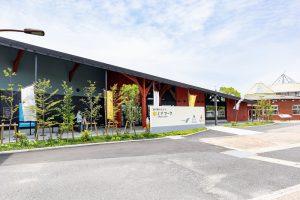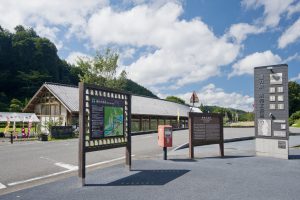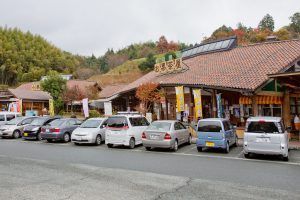Roadside Station Tarumizu
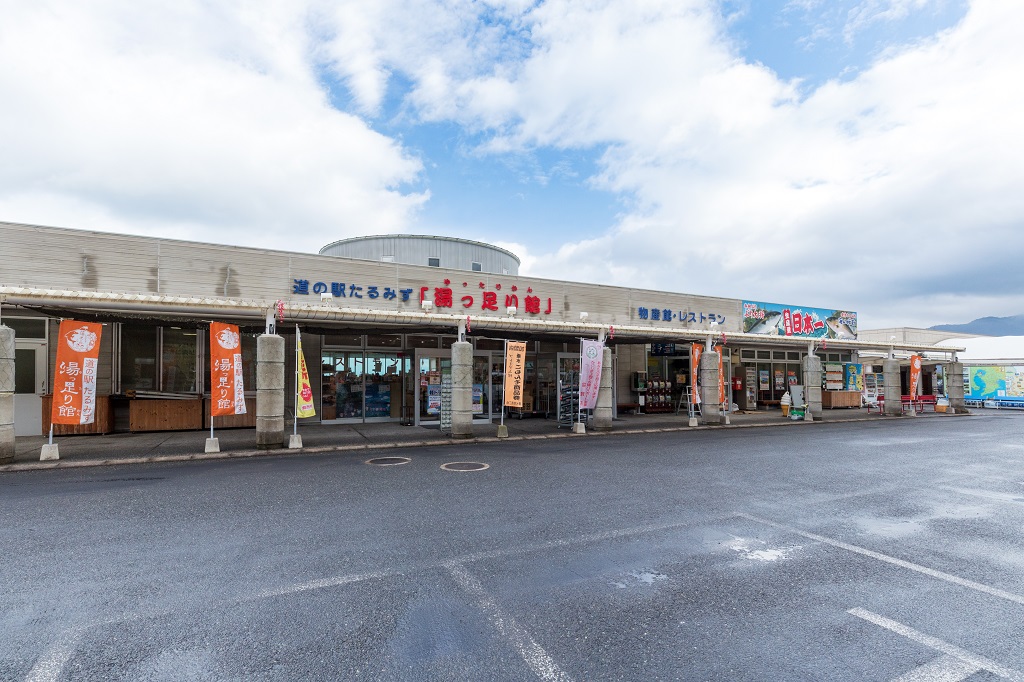
Index
Kinko Bay and Sakurajima spread out before your eyes
Enjoy gourmet food and hot springs as much as you like!
This roadside station is located along Route 220 at the base of the peninsula connecting Sakurajima and the Oosumi Peninsula. Facing Kinko Bay, it is a perfect location from which visitors can see Sakurajima beyond. The product center is called "Yuttari-kan" and there is a 60-meter long footbath in front of the parking lot. It is a strong ally for drivers who want to heal their tired feet after a long drive while enjoying the view of Sakurajima. If you have time to spare, we recommend using the hot spring pavilion. The area is also home to a thriving kampachi (greater amberjack) farming industry with the brand name "Umi no Oukan," and yellowtail farming with the brand name "Buri Taisho," both of which are cultivated in Kinko Bay. Try the kanpachi and yellowtail farmed in Kinko Bay at the restaurant.
Roadside Station Tarumizu Basic Information
| Location | 1038-1 Ushinefumoto, Tarumi City, Kagoshima Prefecture |
|---|---|
| Phone number | 0994-34-2237 |
| Business Hours | 9:00-19:00 Restaurant 11:00-15:00 Onsenkan 13:00-20:00 (last admission 19:30) Footbath 10:00 - sunset |
| Access | 30 minutes from Kokubu IC of Higashi-Kyushu Expressway |
| Official HP | https://mitinoeki-tarumizu.com/ |
Map of Roadside Station Tarumizu
Gourmet Information of Michi-no-Eki Tarumizu
Local product: Green beans
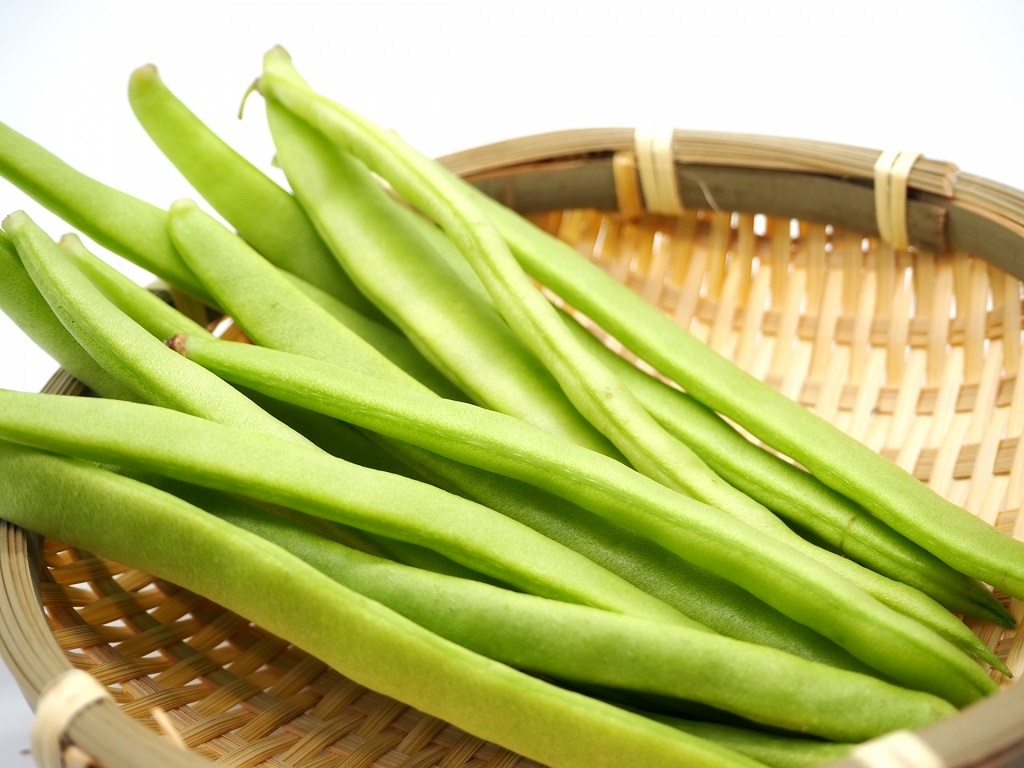
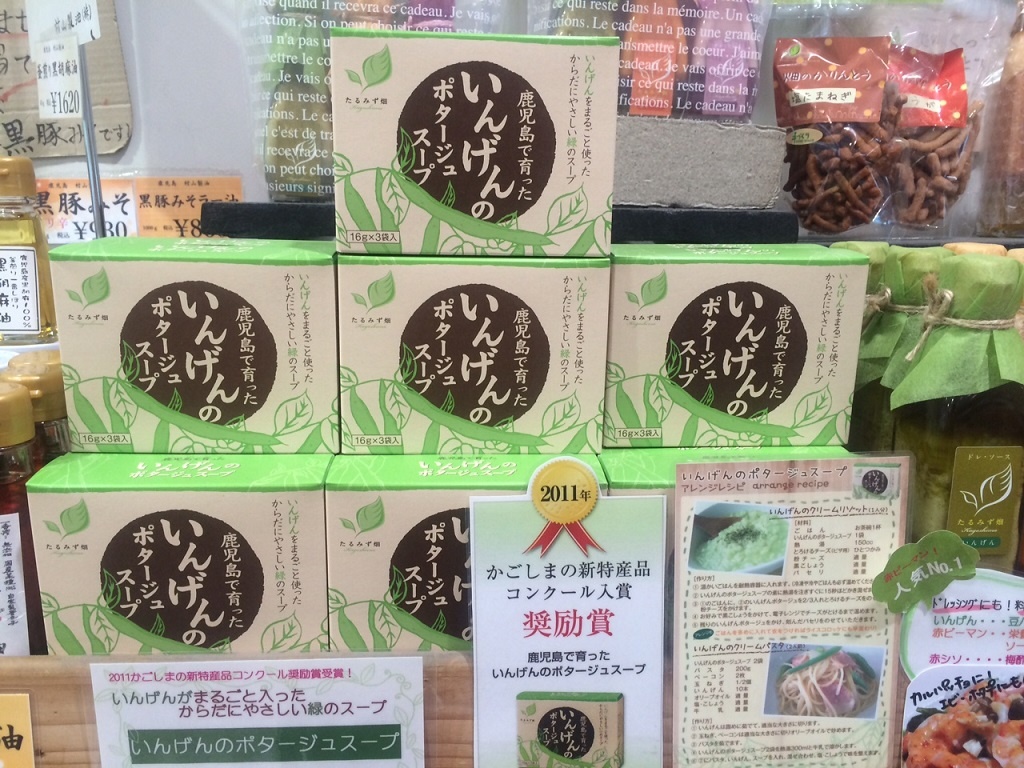
Kagoshima Prefecture ranks fourth in the nation in green bean production and is the top producer in Kyushu (*2019 Japan Proc. Statistics). Within that Kagoshima Prefecture, Tarumi City boasts by far the largest production. It is said that green beans originated in Central and South America, near Mexico, and were introduced to Japan from China during the Edo period (1603-1868) by Zen monk Ingen no Zenji. This is why they were named "Ingen" (meaning "green beans" in Japanese). The variety that is eaten young was introduced at the end of the Edo period (1603-1867) and differentiated into the variety that is eaten young today.
They are usually eaten as tempura, boiled in salted water with sesame paste, etc. A manufacturer in Tarumi City has developed an instant potage soup with these green beans. Fresh green beans are blended with potatoes, onions, and cheese. The result is a creamy and gentle taste. The three bags in a box cost 490 yen (tax included).
This is the one to eat. Kaisen-don (seafood bowl)
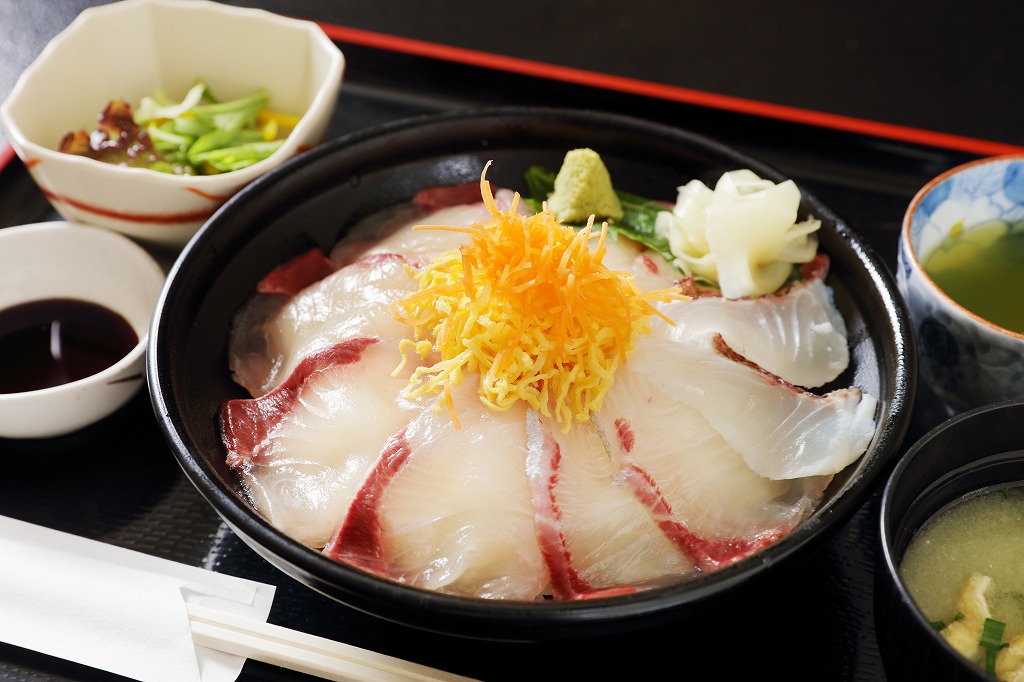
At the restaurant, you should definitely choose the "Kaisen-don" (seafood bowl). You can enjoy a rich taste of Tarumi's specialty yellowtail and kanpachi. Tarumi City is Japan's largest producer of farmed kampachi! After a year and a half of growing from a fry, kampachi can weigh up to 4 kilograms and are shipped as "Umi no Sakurakan," a brand name fish. The season is summer, but the fish is also tasty and fatty from December to March before spawning. The Ushine area, where the roadside station is located, is one of the leading yellowtail farms, boasting the third largest production in Japan. Naturally, the yellowtail on the rice bowl is made from the brand name fish "Buri Taisho" and "Umi no Sakurakan". Both are certified Kagoshima brand fish and freshly landed at the fishing port that day. Miso soup, a small bowl of cooked food, and pickles are included in the price of 1,750 yen (tax included). A pickles bowl is also available (same price).
Let's eat pork bowl
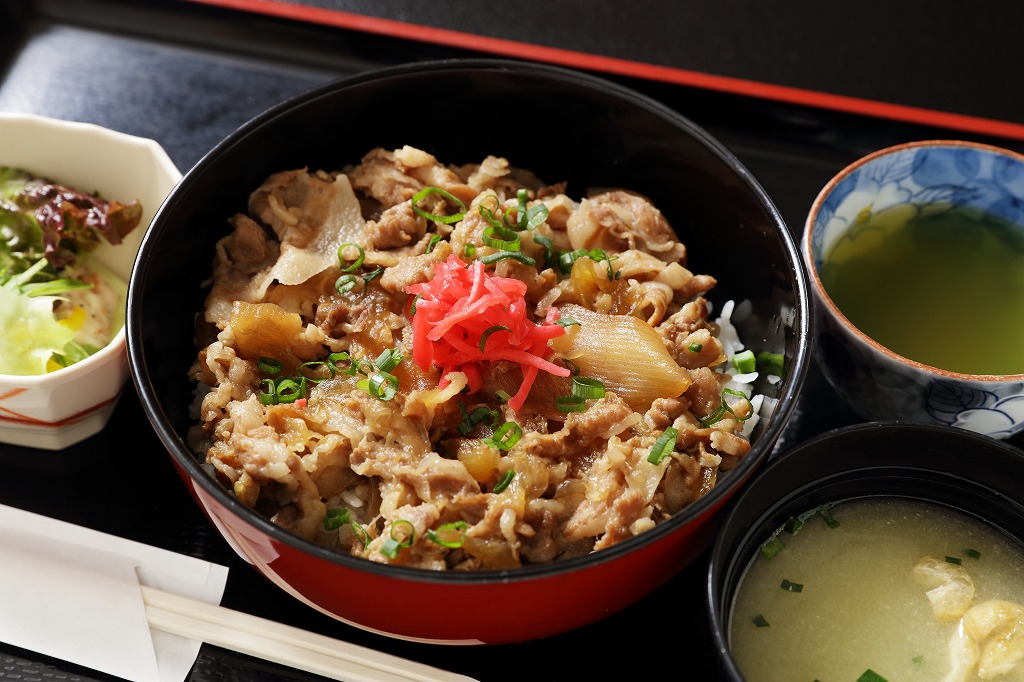
For meat lovers, "Pork Donburi" is also recommended. Sakurajima Miyu Pork, a brand-name pig raised by the local Osumi Meat Industry, is fed natural hot spring water pumped up from 1,300 meters underground, as its name implies. The water, which is slightly alkaline and contains radon, is said to enhance the body's defense functions, such as immunity and anti-oxidant properties. As a result, the "Sakurajima Miyu Pork" grows healthily and is characterized by its fine and tender meat. The meat is cooked in local soy sauce in a sweet and spicy flavor, and the taste is irresistible. It is so rich that it is more filling than a bowl of beef. The price is 1,350 yen (tax included) with miso soup, a small bowl of cooked food, and pickles.
Around Roadside Station Tarumizu
hot-spring health resort
I'm proud of this one too.
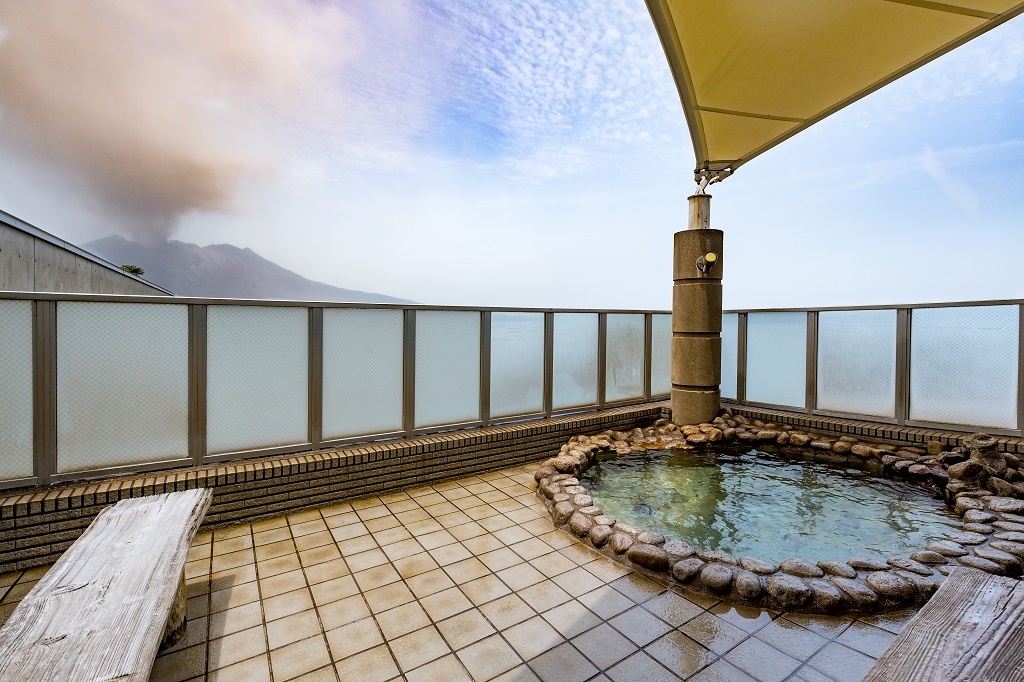
The large baths are located on the first and second floors, with men and women changing on a daily basis. The hot water is free-flowing sodium chloride spring water with excellent heat-retaining and moisture-retaining effects. The hot spring bathhouse boasts of its location, of course. Sakurajima in the front, and the Kirishima mountain range can be seen from the other side of the building. The view of Sakurajima from the open-air bath in the second-floor bathhouse is particularly impressive. Sakurajima, which is billowing a plume of smoke, is in front of the baths! The ever-changing smoke plumes make you feel the heartbeat of the earth so close that you lose track of time. If you are lucky, you can even see a school of dolphins that appear whimsically in Kinko Bay. Junior high school students and older: 350 yen, elementary school students: 150 yen, family bath: 1,200 yen per room per hour.
Sarugajo Valley Forest Station Tarumizu
If you want to have fun in the area
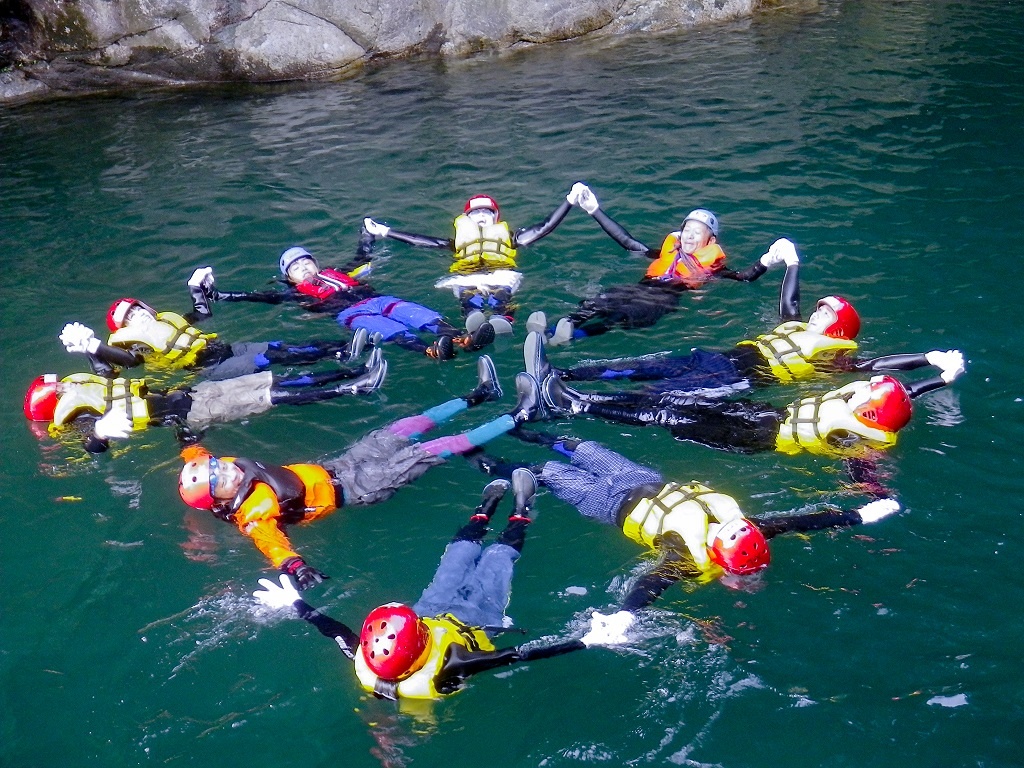
Sarukejo Valley is located at the foot of the Takakuma Mountains, 25 minutes by car from Michi-no-Eki Tarumizu and 15 minutes from Michi-no-Eki Tarumizu Hamabira. The Honjo River, lined with huge granite rocks, flows through the valley, and along the river there is a hot spring bathhouse, a product store, and a cottage with a hot spring bathhouse. Visitors can experience canyoning in the Honjo River, shower climbing, trekking, and rainbow trout fishing. There is also a zip line where you can glide through the canyon like a flying squirrel! After a day of active fun, of course you can go to the hot springs. BBQ at the cottages is also recommended.

